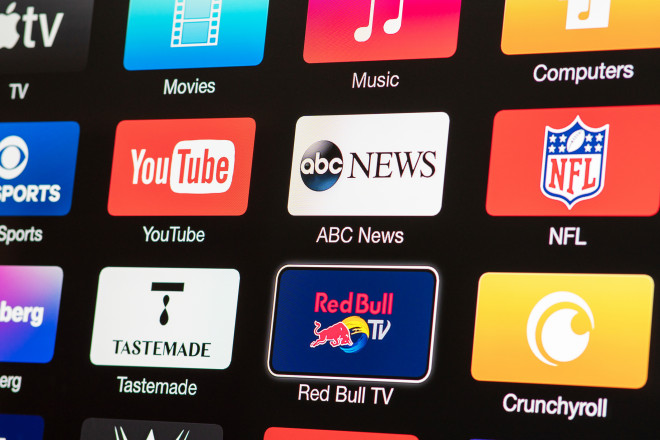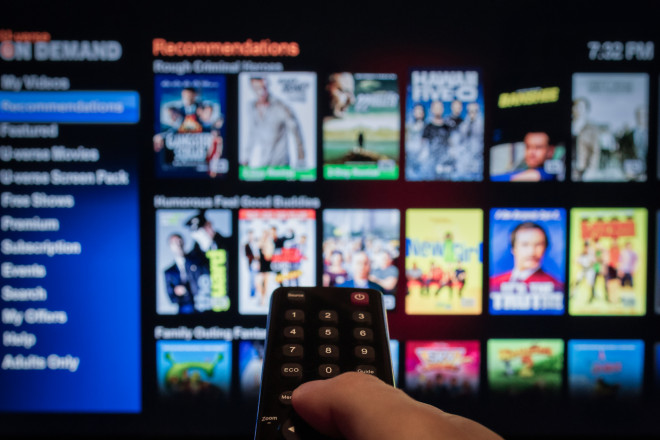Recently, we sat together and reminisced about the wild past. When the internet was still young, pirated copies of current movies were everywhere. People usually brought hidden cameras to theaters and recorded the screens–background noise and poor image quality included! Who'd ever want to watch that? Then, streaming services appeared on the scene and illegal movie sharing sites became less frequented. For a fair price, users could instantly pick from a solid selection of movies and songs, good enough for most users. For some time though, illegal sites have been seeing an increase in visitors–and stream service providers may be partly to blame!

Being a true fan of video rental stores (RIP!), I had my reservations about streaming initially. Would my connection be fast enough to allow for a smooth high-quality viewing experience? Would the good but always changing movie selection justify the monthly fee? How long would it take for current movies to make it to my streaming service and how long would they stay on? And why would I want to pay for something I wouldn't own? Most of my concerns were dispelled. I kept my small number of subscriptions and was mostly satisfied. But, naturally, the success of streaming pioneers like Netflix or Amazon Prime didn't go unnoticed, and set off an unfavorable development.
As customer numbers increased, so did expectations on the part of providers–to the disadvantage of viewers. It somehow feels like we're now back to square one. Many many years ago, an invisible rift was opened on our schoolyards, running between students with and students without cable TV. The latter were unable to join in the latest conversations about "cool" new series and movies. Today, history seems to be repeating itself: Once again, some movies are only known a handful of viewers– because the number of providers keeps rising! It was obvious, that, as viewers kept turning their backs on traditional TV, streaming would become a mainstream market, with more and more competitors wanting a piece of the action. Still, market researchers hoped providers would be smart enough to prevent fragmentation–their hopes were disappointed!
 Is media piracy gaining new supporters?
Is media piracy gaining new supporters?
That's why, depending on your region, there's now a plethora of streaming service providers vying to woe customers with exclusive content. Entertainment heavyweights, like Netflix, spend billions on their in-house productions, and Amazon's self-produced "Lord of the Rings" series already makes some Hollywood movies seem like local shoestring productions. The quest for exclusivity (and subscribers) means we'll end up with dozens of providers with dozens of series but still only limited time to watch. I can see this tendency even in the comparatively "small" German market–and that's not counting the individual media libraries with free or ad-based content that traditional TV networks are pushing or the ever-growing list of special interest channels. Yes, I'm talking about you, Amazon Prime. And don't get me started on sports events!
It seems to me, we're not only paying in money but also in (life)time. Based on my interests, including magazine and music subscriptions, I loosely calculate that I'd easily be paying around €200–a month! Who wants (and can) spend that much for evening entertainment? Then there's the issue of finding the things I want to watch. It's not like there's a unified user interface. Every service looks different. A former college friend from San Diego recently recommended a series to me so I started looking. Result: Local providers are still negotiating over the broadcasting rights because of rising costs. In other words: Many dogs are fighting over one big bone. And once the rights have been obtained, there's still the delicate issue of localization (Germans need everything dubbed). So I'd have to subscribe to a foreign service to watch it now–and use VPN to bypass geoblocking. Not a great alternative!
The bigger the selection, the longer it takes to sift through the titles to find what you like. There's a German saying: Wer die Wahl hat, hat die Qual (literally: He who has a choice, faces [the] agony [of choosing]). I can handle browsing two services, but handling five or more is too time-consuming. Some services have begun putting out dedicated magazines to bring order to the chaos but these can barely cover the few highlights. Consequently, left with a fragmented geo-blocking-riddled market and limited funds, many customers have begun to fall back on illegal sources. The thought that a service offers appealing content in one country but not another doesn't, well, appeal to everyone!
 Movie searching made less simple
Movie searching made less simple
Finally, let's talk about technological complications: Most viewers access their services through dedicated apps on either smart TVs or dedicated streaming boxes/media players–watching shows in a browser on your PC or streaming content from your PC to your TV via Chromecast is not for everyone! Some of these apps work well, other's do not. And just like every software, these apps (d)evolve over time with new features being added and old ones removed. Talk about sensory overload! Even some of my most hardcore streaming fans no longer experience fear of losing out on great content, a major motivation to subscribe, but failure to cope. I genuinely feel, streaming services are rapidly running their business model into the ground. Choice is good, too much choice, and too little time and money, is not. This won't end well for many!
What I would like to know: What's your take on the streaming situation? Can you imagine paying for five or more subscriptions? Do you even stream movies?




I actually have Netflix, Amazon Prime Video, and Hulu. But I won't be signing up for Paramount+, Marvel, or Disney+. It is not worth the cost. I only have so much time in a day or night.
I sympathise but at 58 and of limited means I lost interest in anything that wasn't a complete series handed to me on a pendrive by a friend when our local T.V. services adopted broadband and the 300 Euro set top recorder require to view it worked for just 2 years. Luckily the state T.V. service has a few on demand European subtitled crime shows that contribute to my diet but I cannot afford the data to stream endless shows so I do what I did as a child before we had much television and I read books. Cinema is too expensive now too so it is weird for someone who watched movies avidly till into his '40s and quality T.V.shows until even 3 years ago all of this competitive choice that you speak of has left me with...nothing! Sure I can visit Kanopy or some such but instead i have just found other things to do and suspect the moving picture industry to be completely oblivious to my disappointment.
Nice article.
Sven,
As usual, very informative and thought provoking.
Trawling through heaps of unappealing titles has made us rethink our need for subscriptions on many a time. We have no desire to watch US films, TV series,etc which may appeal to a US audience...but has NO appeal to me in Australia. And again, the increasing move towards violent or horror stuff may appeal to a younger audience, but not those of us born last century.
However, what I loved the most was your note that, 'apps' have DEVOLVED as programmers try to justify their roles. My TV used to have a simple way of recording what I was watching. Now, (after an update) instead, we press the same button and get a synopsis of what we are watching...WHAT FOR !!!! Trying to find the 'Record screen' is totally lost somewhere ! Same for my DVD TV recorder..simple user friendly functions now buried deep in some obscure setting !@!@@#$$%
I digress. Yes, we are now looking at how we can get better value from our subscriptions..and YouTube and live TV seems to offer us more in terms of viewing functionality than paid-for streaming. cheers
I have stopped paying for Cable TV for over 3 years now. I have been using streaming and antenna. In the last year there was LOCAST for streaming local stations which was great. But the cable companies sued and won their case. LOCAST was non-commercial and I think the Judge was wrong to say that LOCAST was not completely non-commercial just because they asked for donation. I think the Court is doing a disservice to the general public by denying them this free access to the local stations which they are entitled to by law.
Sign up for one service. Stream everything worth binging on. Cancel. Sign up for the next service. Not ideal, but it certainly can work.
I would like to enjoy any program I chose without advertisements. I would also like to watch them at any time within my time periods and pause or rewind to the beginning if I want to come back later. Furthermore, I am already paying too much for, so call adds free and get adds on almost everything I watch if it's not a movie. Live shows should be live the same day at the same time and not live today's old or older. As for streaming, I would like to steam without adds as well and enjoy them in my time periods also.
In the US it's even worse, because most anybody with broadband does stream, and a lot of us have five or more "regular" services! It used to be that Netflix, Hulu and Amazon Prime was enough to cover most of your streaming needs, but then the studios and networks got greedy and started creating more walled gardens of streaming content.
Netflix U.S. is largely limited to original material (which is why they produce so much now), overseas content (a lot of Indian and Korean movies and series play on Netflix now), and what shows they have that are still under contract - so if you're a fan of STAR TREK, you have to get Paramount+ as well; STAR WARS or the MCU - Disney+; DCEU or HBO - HBO Max; THE OFFICE, PARKS & RECREATION or THE BLACKLIST - Peacock; TED LASSO, FOR ALL MANKIND or that upcoming FOUNDATION series - AppleTV +. Add one or two specialty channels to that like Criterion, BritBox or Shudder, and you're at close to $100/mo. for streaming.
I HATE streaming services because they have ripped shows I watch off the Cable TV and stuck them on streaming. I already PAY for cable, and I can DVR all of it.
I really hope it dies out. Cable or satellite with DVR is good, easy to find, easy to record and watch when you have time.
Wer die Wahl hat, hat die Qual (literally: He who has a choice, faces [the] agony [of choosing])
"Analysis Paralysis"
Hello,
This is a needed topic.
Cost, as you mentioned, doesn't always equal expected value.
However there are more important "issues" here that seem to make old school downloading and pirate music etc. content of the past just a childish punk. Security, socialization, class divisions (cultural/ethnic/wealth) and possibly managed content, the last having the capability of being the most offensive, have no 'guardrails'.
How massive content is streaming entertainment balances legal/societal and customer grabbing is an interesting topic (to me for one) so keep up the good work.
(Also, in the sentence "...plethora of streaming service providers vying to woe customers with exclusive content..." the spelling is 'woo'. So as not to not to confuse the word with an internet sales site, consider "...providers wooing... or, ...have wooed..."
NR
I am only interested in HD Music streaming.
No I do not stream movies and I'm not an avid TV person.,
My idea of a day well spent is doing something I love in the day and sit relaxed in the evening with a nice glass or two
of wine watching the news and a documentary on someones life. By the way I am 80 and still enjoying life.
I am on Social Security Retirement & can't afford to pay for any of the streaming channels. I have Roku & am restricted to what is free. A little is good, but most, not so much.
The reason for increased demand from illegal streaming sites is purely down to the greed of "legitimate" suppliers. Anytime the public feels that they're being unfairly charged for a service, they'll look elsewhere. Most people don't mind paying a fair price, but when companies start to raise the charges for their services unfairly, that's when the pirates gain.
I do not stream in any way, movies or otherwise, in part because of all the headaches you mention. My cable provider ( COX ) provides excellent service and support, selection of channels and packages, and the ability to subscribe to services if desired at a very reasonable cost. The only hassle I experience is when I visit the streaming sites, like Amazon et al.
Like hundreds of channels and nothing interesting to watch.
Funny, this subject should come up on this site, since given that most of the software on this site; I would posit borders on copywrite issues, but legally avoids the issue by providing a much cheaper very functional alternative to main stream software and appreciated very much. I too was a HUGE fan of Pirate Bay one of the notables LOL and suffered through many snuck in camera movies wanting to watch the latest. That said as time moved along, my son got a "stick" which he quickly 'modified' to get the latest. What ended up being a novel idea, turned into a quick realization that it was nothing more than a confusing mess of 1000's of choices. I finally broke down and got the (a) stick, I didn't hack it. Instead I settled for one main service Sling, it has the 5 (yes) channels I watch is not confusing, I do pay for one other Discovery + ONLY if I miss my regular show, also what's nice is since my business is an Amazon prime member I get that too. Between the 3 I don't miss much, I don't pay for cable and don't get blackouts. I didn't have to break the bank for a smart TV. What main stream media has done in my opinion is screw themselves out of the very market they at one time dominated, especially now that they are doing in house productions and flooding there media promoting same and then require you to sign up, pay for that which your essentially already paying for and then in turn make money selling your info, try unchecking that little box....see what happens, dude you're screwed. For me I simply couldn't justify paying over $100.00 a month for 5 channels, then extra for the rare 'sit-down-eat popcorn movie's .
This is a very old school opinion but If I can't physically hold it, what is there to own? Give me a printed book or movie on DVD to buy. Streamers provide a service where I don't have to "review" it from Pirate Bay and my seedbox. If the streaming service is more difficult then Pirate Bay & seedboxing, goodbye streaming service. :)
Good piece, Sven. An underlying observation is the monetization of watching programs by charging for delivery service. Here in the US, we had 4 major networks and some local channels - all for free, subsidized by advertising. Now, most people stream content - either on a paid service like cable TV or on a streaming Internet service. Either way, more and more people are paying for programming - AND the providers are making money from advertising. On YouTube, you can avoid advertisements by paying a fee - so it is all about monetizing content delivery. It seems like double-dipping for providers to charge customer fees AND accept ad revenue - but there it is - there is money flowing from both directions. I lament the loss of free (paid by advertising) programming - but that is the trend. More people are willing to pay than complain about the rising cost. So, we pay more and, as you suggest, see no more than before as we have no more time to watch - making it more difficult to locate and choose good programs. More is not always better. Thanks for asking. JR
I subscribe to several streaming services and live in the USA. However, there is are several shows produced in Canada that were being aired here, but no longer, such as Private Eyes that was being aired in the US by ION TV. I need an app, that I'm willing to pay for, that will allow me to stream Canadian content.